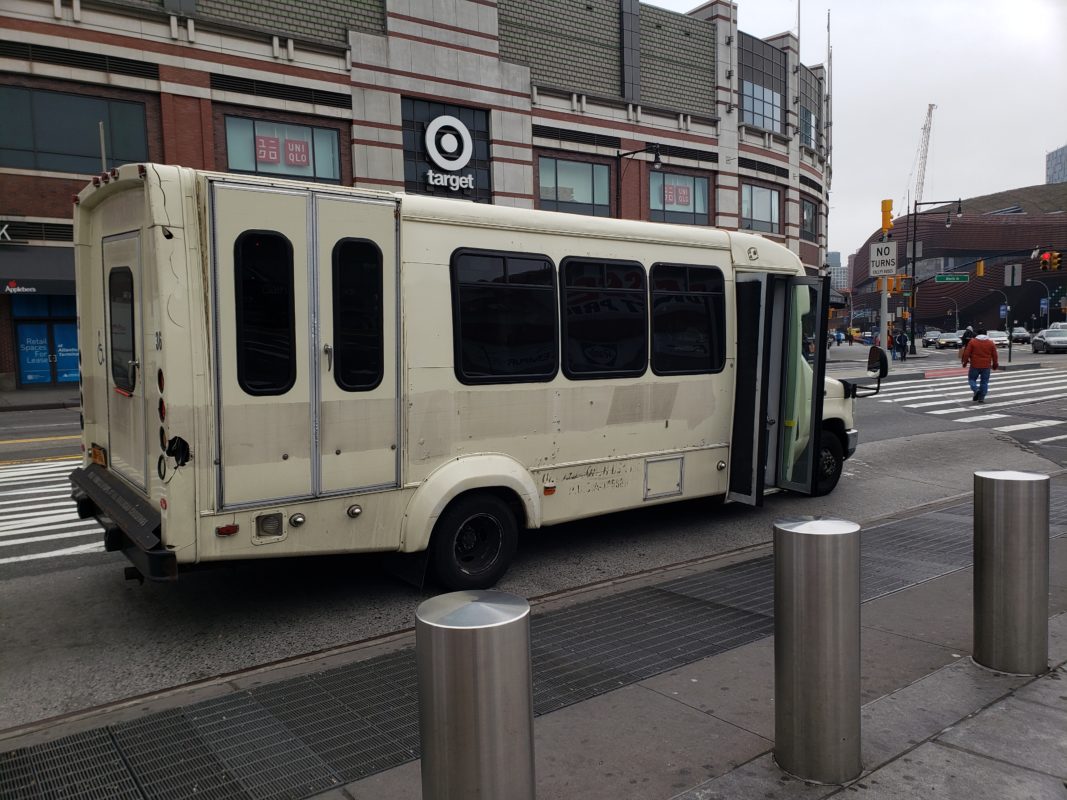Dollar Vans Are Still Operating, Serving The Underserved


Mayor Bill de Blasio signed an executive order on Tuesday, March 17 banning “pooling” for ridesharing services like Uber and Lyft — meaning no cheap group trips with strangers, but it stopped short of saying the order explicitly applies to Dollar Vans as well. As they keep serving their routes across transit deprived parts of Brooklyn, cramming in 12, 15 or more passengers, social distancing is not an option.
At this time, all trains, buses, and subways are still carrying people to work, doctors’ appointments and grocery stores. So should the city treat Dollar Vans as a necessary public good or as a risky commodity?
The New York City Taxi and Limousine Commission (TLC) that licenses Dollar Vans, though many operate unofficially, has released a set of guidelines on how licensed drivers should protect against Coronavirus. TLC has not enacted any legal limitations and does not recommend changing service beyond practicing increased hygiene.
“TLC wants for all New Yorkers to prioritize their health and follow safety guidance and precautions during this pandemic,” TLC spokesperson told us, urging drivers to follow the guidelines, but would not elaborate on how Dollar Vans would be classified as Coronavirus restrictions tighten. They also emphasized that they are working with NYPD to crack down on non-licensed vans, which they consider a health hazard.
An app called Dollaride was released in December of 2019, allowing users to digitally flag-down nearby vans, and New York City has its own app that allows passengers to rate drivers and includes maps and information, bringing Dollar vans closer in line with ridesharing apps.
Other ridesharing services like Via, an app that allows users to share rides at a cheaper rate than a personal Uber or Lyft, has shifted to offering rides to individuals and families while De Blasio’s executive order is in effect.
“We have always viewed Via as a core component of NYC’s public transit system,” said a Via spokesperson. “We know many New Yorkers depend on us for essential transportation needs. For those who do need to travel, we remain as committed as ever to providing an affordable, convenient, and efficient option during these difficult times .”
Many Brooklyners rely on Dollar Vans for their commutes or for access to other parts of the city in a way that is more in line with buses or the subway system.
Historically, Dollar vans have served underserved neighborhoods that were abandoned by public transit. Dollar vans started running in 1980 during a transit strike, but didn’t receive official sanction from TLC until 1994, The New Yorker wrote. They remain the most affordable form of public transit in NYC — the Flatbush route only costs $2, whereas a single subway ride costs $2.75. Many residents of Central Brooklyn rely on Dollar vans for their commute or general mobility around the city. The service is deeply ingrained in the communities that use them.
Many of the Dollar Van drivers are poor immigrants who can not afford to stop working.
“Most are entrepreneurs, and this is their life line,” Kwabena O’shea, a Brooklyn resident who uses Dollar vans told us. “ If the buses continue to run so will they.”
Curtis Brown is a licensed Dollar Van driver and Trinidadian immigrant. He’s been driving since 1997.
“It’s difficult,” says Brown. “But we’ve got family to feed.”
He has five children, and his wife works in the New York public school system. She has been home with the kids since Mayor De Blasio ordered New York City schools to close on Monday, March 16. Brown says business has slowed because of Coronavirus. The van had eight out of fifteen seats filled at the time, so people haven’t stopped taking Dollar Vans entirely.
“It’s there, but I don’t stress it. It could happen, but I don’t worry,” said Brown about the possibility of getting sick. “I have to pay rent.”
